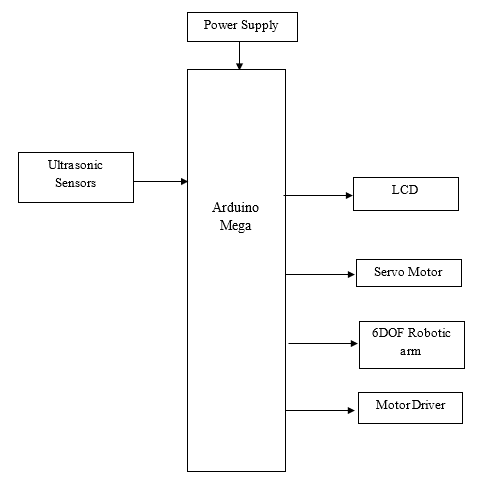Intelligent Food And Grain Storage Management System For The Warehouse And Cold Storage
Also Available Domains Arduino|Embedded applications
Abstract
The Intelligent Food and Grain Storage Management System is designed to ensure optimal environmental conditions in warehouses and cold storage facilities to prevent spoilage and ensure the longevity of stored food and grains. The system utilizes an Arduino Uno microcontroller integrated with various sensors and control modules. An MQ135 gas sensor continuously monitors air quality, and when harmful gases are detected, a cooling fan is automatically turned on via a relay module to improve ventilation. In case of high temperature, detected by the DHT sensor, a Peltier cooling module is activated to maintain a cool environment essential for preserving perishable goods. A moisture sensor checks for dampness, and fire and LDR sensors provide fire safety and light condition monitoring, respectively. If any abnormal condition is detected by any sensor, an alert SMS is sent via the GSM module to the warehouse manager for immediate action. Furthermore, during low light or night conditions, detected by the LDR, LED lights are automatically switched on to ensure visibility and security. A buzzer and LCD display are used for the audio-visual alerts and system status display. This intelligent automation enhances food safety, reduces manual monitoring, and ensures quick response to environmental changes.
NOTE: Without the concern of our team, please don't submit to the college. This Abstract varies based on student requirements.
Block Diagram

Specifications
Hardware Requirements:
- Power Supply
- Arduino UNO
- DHT11 Sensor
- MQ135 Sensor
- Relay
- CPU Fan
- Peltier Module
- Fire Sensor
- Moisture Sensor
- LCD
- LDR
- LED
- GSM
- Buzzer
Software Requirements:
- Arduino IDE
- Embedded C
Learning Outcomes
- Arduino pin diagram and architecture
- How to install Arduino IDE software
- Setting up and installation procedure for Arduino
- Introduction to Arduino IDE
- Basic coding in Arduino IDE
- Basic of Embedded C language
- Basics of IoT platforms
- Working of power supply
About Project Development Life Cycle:
- Planning and Requirement Gathering (software’s, Tools, Hardware components, etc.,)
- Schematic preparation
- Code development and debugging
- Hardware development and debugging
- Development of the Project and Output testing
Practical exposure to:
- Hardware and software tools.
- Solution providing for real time problems.
- Working with team/ individual.
- Work on Creative ideas.
Project development Skills
- Problem analysing skills
- Problem solving skills
- Creativity and imaginary skills
- Programming skills
- Deployment
- Testing skills
- Debugging skills
- Project presentation skills
Thesis writing skills





 Paper Publishing
Paper Publishing
